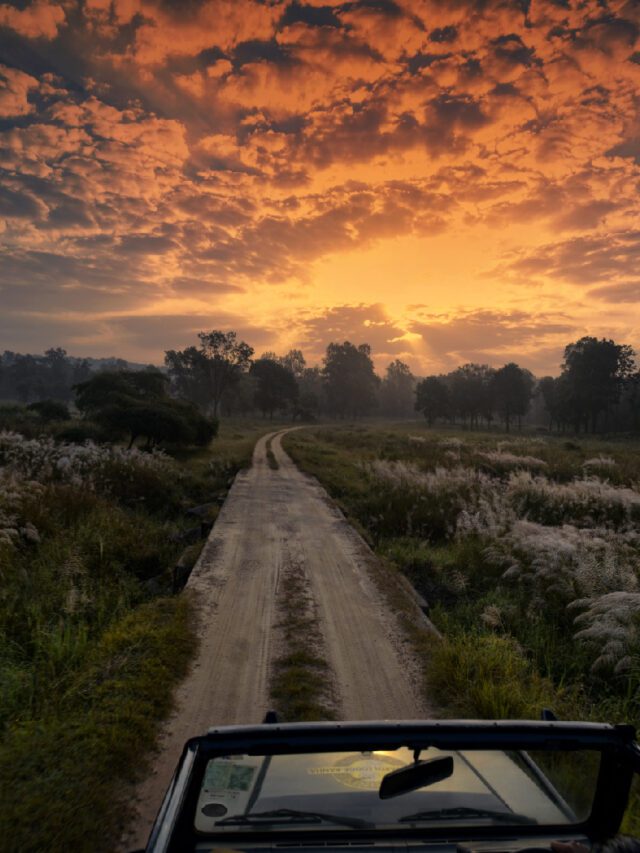India is one of the most sought after destinations in the world for wildlife safaris. And why not? After all its lush, expansive, thriving forest cover is home to a rich diversity of wildlife species and abounding flora.
Wildlife safaris in India promise to be an adrenaline thumping experience that are beyond exclusive. The versatile, undulating landscape of India supports an ever flourishing forest cover that offers a diverse range of wildlife safaris experiences. Thus, ensuring a motley of experiences in the depths of India’s buzzing wilderness, for every wildlife enthusiast.
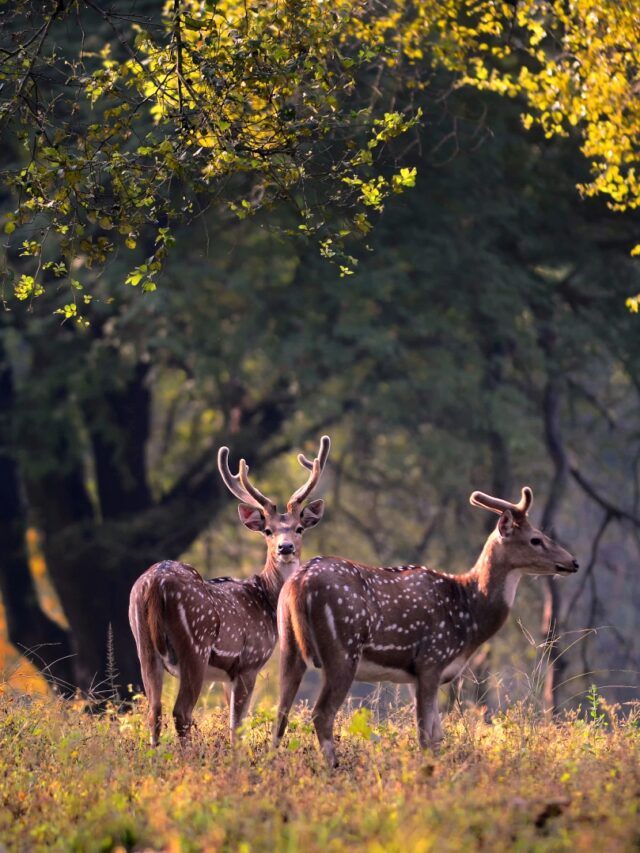
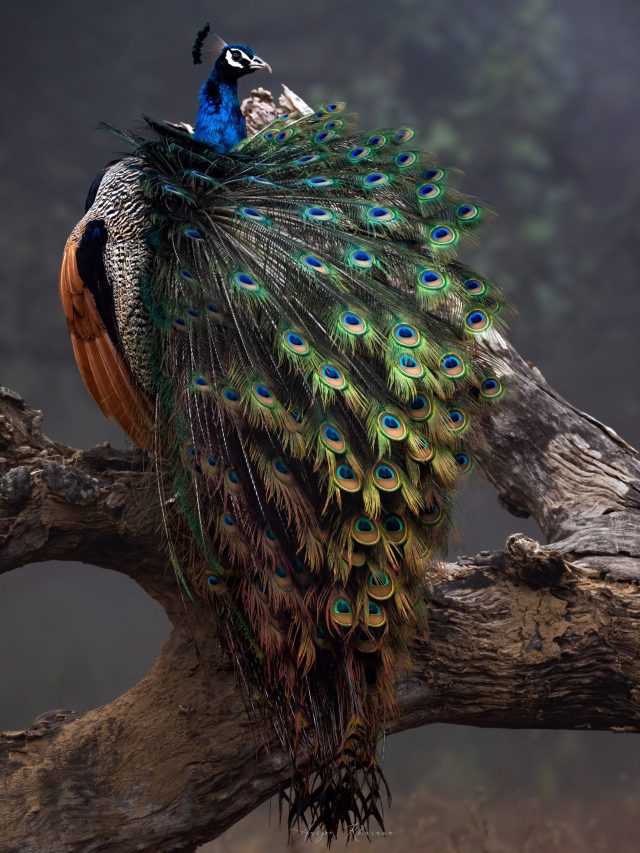
With the largest stronghold of tiger population in the world, India offers one of the most exclusive Tiger and Wildlife safari experiences. Tiger sightings are of course a matter of chance, yet some parks offer higher likelihood of sightings due to the landscape and forest cover.
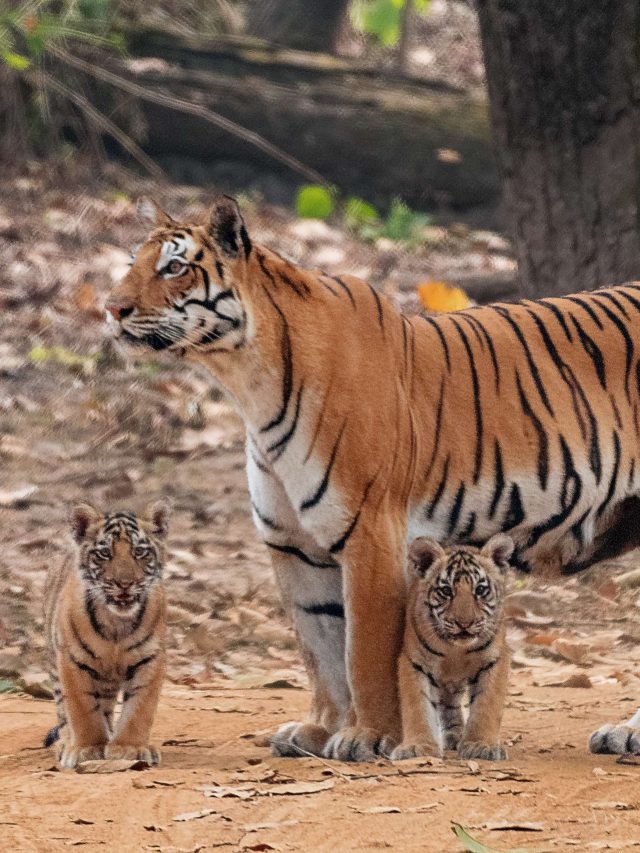
As of 2023, the population of tigers in India is estimated to be 5,574 individuals, in and around India’s 54 tiger reserves; thereby making India one of the most preferred destinations to experience a wildlife safari.
What’s more, our bustling bio-diversity hosts a teeming population of other species that include; 400 mammals, over 1300 species of birds, about 500 reptiles, plus an abundance of amphibians, insects and aquatic life.
7 Best Wild Life Safaris in India
Listed below are the Top Parks for wildlife safari in India that are a must-do:
1. Tadoba Andhari Tiger Reserve, Maharashtra
Located in Maharashtra, Central India, Tadoba Andhari Tiger Reserve, or Tadoba National Park is one of the most preferred tiger destinations in India and the largest in the state.
A dry, deciduous forest with mostly teak and bamboo trees, Tadoba also has a mix of grasslands and dry forests that allows for better visibility throughout the forest, thus ensuring excellent sightings. The otherwise dry forest boasts of a few lakes and rivers that provide abundant water resources in the park. The park has been well maintained with plenty man-made water saucers as well, which act like magnets for tigers and other wildlife in the hot months of summer.
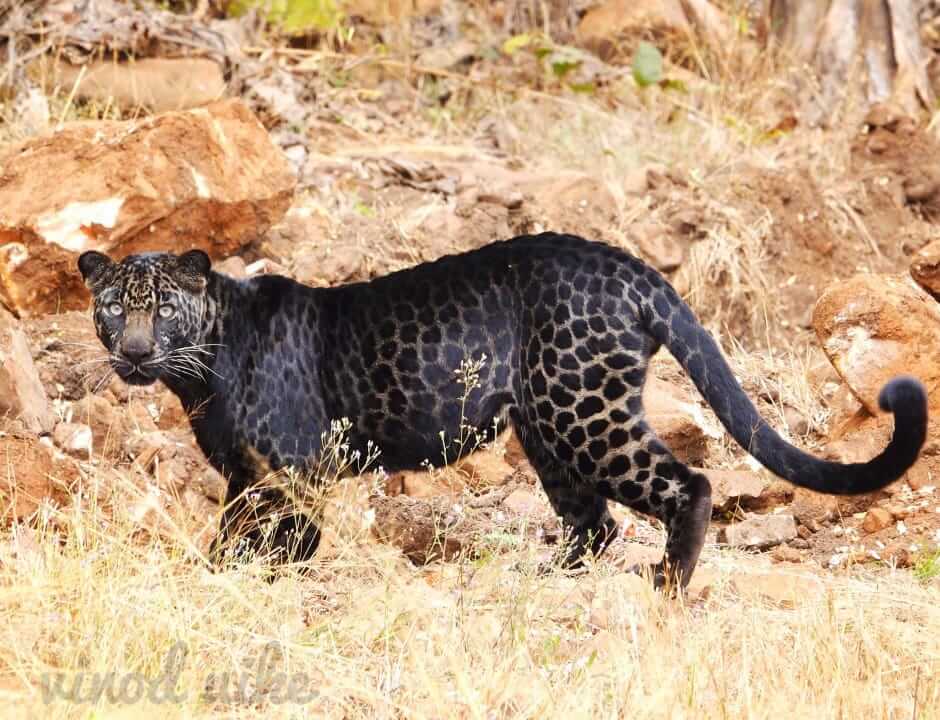
Tigers can be spotted strolling, or lying leisurely by the man-made water sources and around this rich landscape.
The perennial Irai lake is a major tourist attraction offering a residential population of a host of birds and fresh-water crocodiles. Tadoba lake also sustains a major part of the park’s wildlife.
The Big 5 of Tadoba include: Leopards including a Black Panther named Blacky, Sloth Bears, Wild Dogs, Gaurs, the Tiger is allotted the pride of the jungle. Marsh Crocodiles, Indian chameleon and a variety of snake species are found in the land of the Taru, the much revered deity of Tadoba.
Tadoba is also a bird lovers paradise with a population of residential and migratory birds some of which include White-eyed buzzards, Oriental honey buzzards, Paradise flycatchers, Indian rollers, Indian pitta, Brown Fish owl and many others.
The buffer zones of Tadoba are also diverse and thriving with flora and fauna, and are comparable to the core zones for safaris.
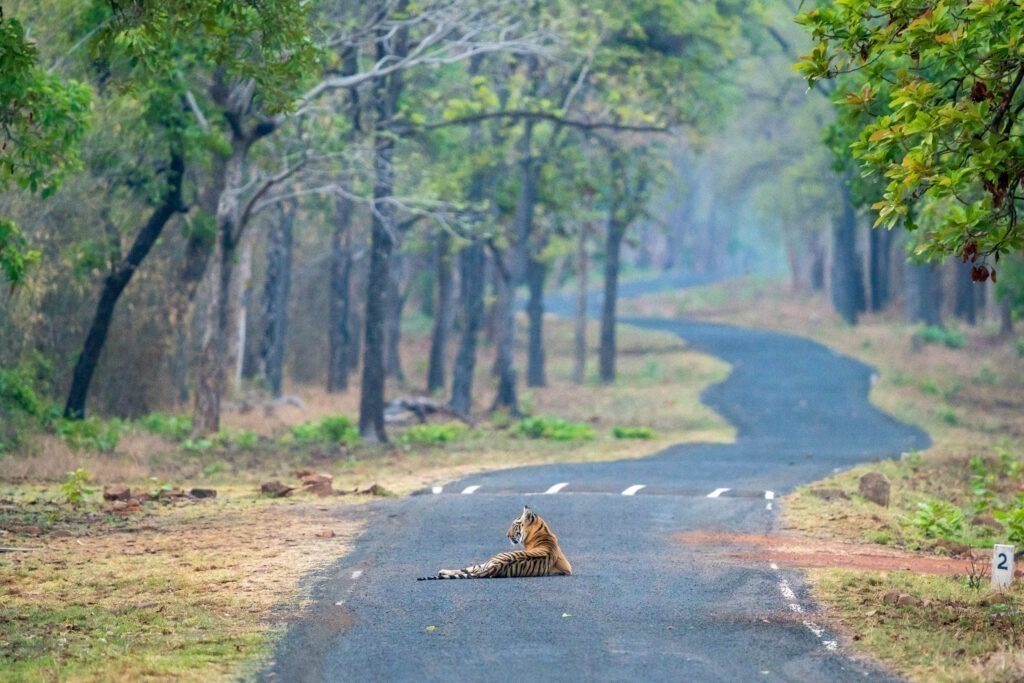
Best Time to visit Tadoba National Park:
Throughout the year
Tadoba Wildlife Safari Tour Duration:
Tailor made as per need the Tadoba wildlife safari; suggested tour duration is minimum of 6-7 nights. Tadoba can be combined with Pench as well in these 6-7 night duration.
Highlights of Tadoba:
Tiger Safari, Black Leopard, Magan Khadi and Ramdegi Temple are a few things, among the many things to watch out for in Tadoba.
Best way to reach Tadoba National Park:
Fly to Nagpur and drive for 3 hours to reach Tadoba National Park. Nagpur is well connected from all major cities in India by rail as well.
2. Pench Tiger Reserve, Pench, Madhya Pradesh
Pench is where the literary genius, Sir Rudyard Kipling set his timeless classic, The Jungle Book and its wolf child, immortalised as Mowgli. This masterpiece inspired by the true incident of a human child, reared by wolves in the nineteenth century, in Seonee (now Seoni) district, is located in the quaint, charming and bounteous landscape of Pench, in Madhya Pradesh.
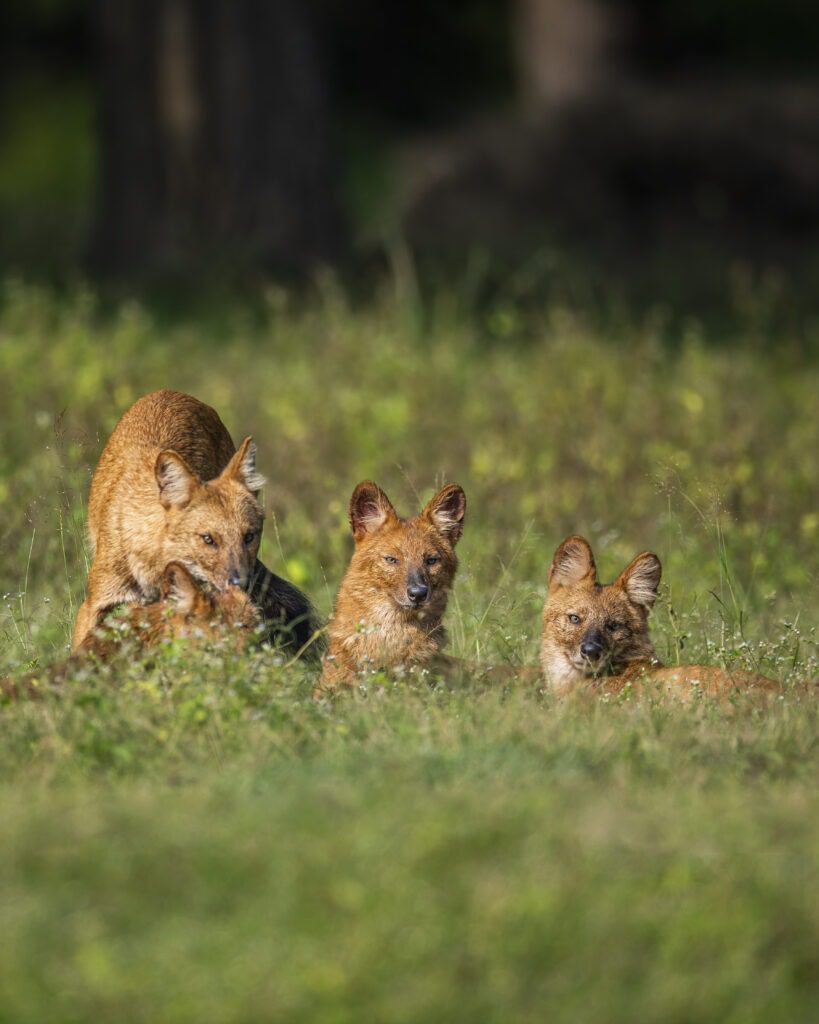
Pench Tiger Reserve is spread over Seoni and Chhindwara districts of Madhya Pradesh and Nagpur district of Maharashtra and named after the Pench river. The dense, deciduous forest of Pench Tiger Reserve enwrapped in towering teaks, Mahuas, and dense bamboo forests, provide an idyllic communion for today’s reality and yesteryears Jungle Book fantasy.
The Pench-Kanha corridor offers the best of both worlds, giving the discerning traveller an opportunity to experience the splendour of these two national parks.
The late tigress Collarwali, Queen of Pench, is known worldwide for giving birth to the maximum number of cubs in the wild, till date and putting Pench on the world’s tiger map.
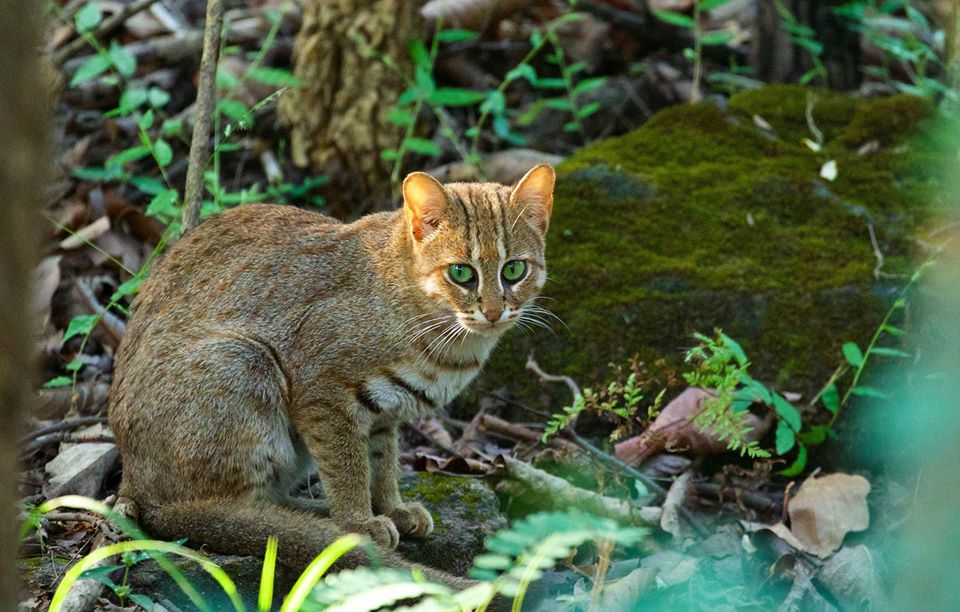
Teaming in both flora and fauna these stunning jungles are home to Tigers, Leopards, Sloth Bears, several species of deers like Spotted deer, Nilgais, Sambhar, Chinkara, etc, Dholes/Wild dogs, Gaurs/Indian Bisons, Rusty Spotted Cats, Civets, Striped Hyenas, Giant Flying Squirrels, etc.; and not to forget Kipling’s adoptive family for Mowgli – the Wolves, reptiles like Monitor Lizard, Indian Rock Python etc.
Pench is an idyllic land for bird watching, hosting over 210 species of birds, including migratory birds.
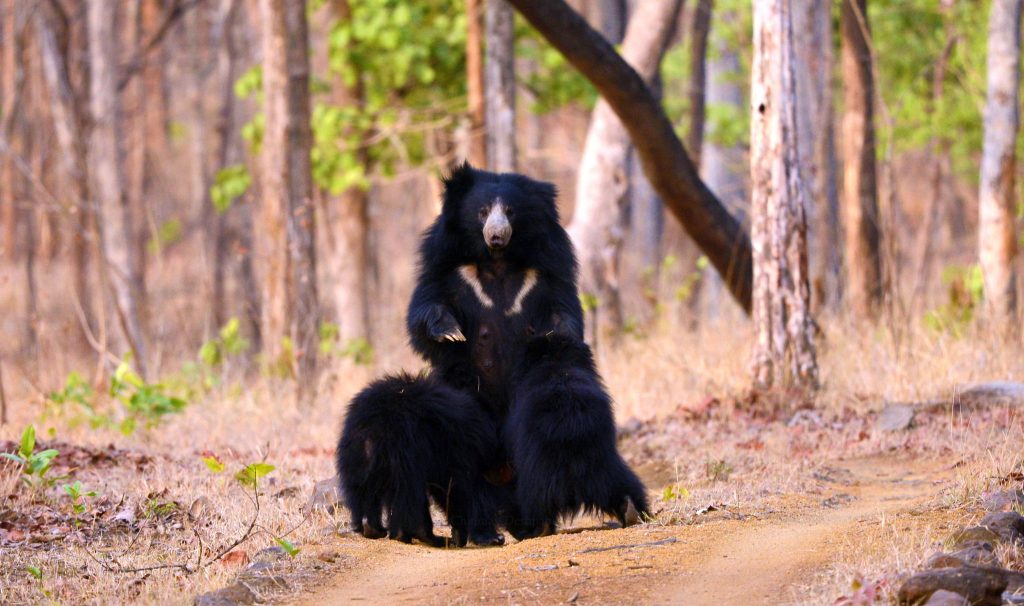
Best Time to visit Pench National Park:
October to June
Indian Wildlife Safari Tour Duration:
Tailor made as per need Pench wildlife safari duration should be a minimum of minimum 6-7 nights and can be combined with other neighbouring national parks like Kanha and Tadoba.
Highlights of Pench:
Tiger Safari, Leopards, Wild Dogs and Teak Forest, Rukhad sanctuary for tailor-made safaris in Pench.
Best way to reach Pench National Park:
Fly to Nagpur and take a road trip of 3 hours to reach Pench. Nagpur also makes for a convenient road trip as well as rail head destination, as it is well connected from all major cities in India.
3. Kanha National Park, Madhya Pradesh
Located in the Central Highlands, in the Maikal range of Satpuras, Kanha National Park is one of the largest parks in Madhya Pradesh, making it an ideal tiger country. Kanha is also known for the successful preservation of Barasinghas or Hard Ground Swamp Deer, and saving them from the brink of extinction.
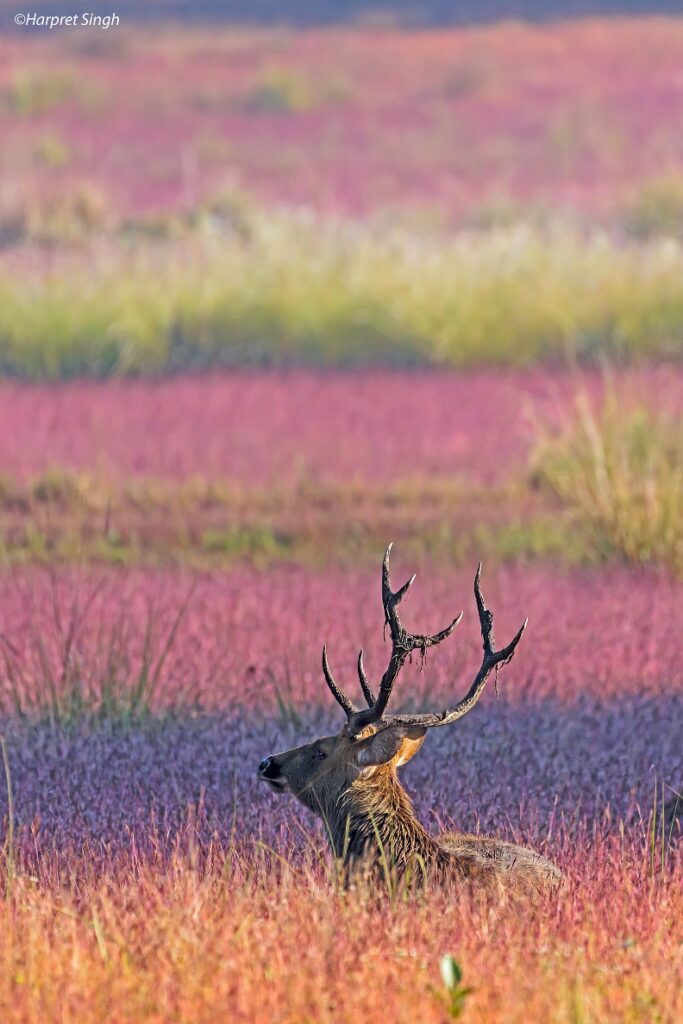
The mixed deciduous forest of Kanha supports towering Saal forests and bamboo thickets. The undulating landscape with sprawling, dense vegetation groves, charming hillocks and open meadows; provide an idyllic home to vast array of species.
This landscape not just sustains but helps large numbers of Chitals, Sambars, BaraSinghas and Gaurs flourish. They in turn support populations of predators and co-predators like Tigers, Leopards, Wild Dogs, Jungle Cats, Golden Jackals, Foxes that abound.
David Attenborough’s well-known documentary ‘Tiger’, based on the life of, ‘Laxmi’, a tigress of Kanha, was shot in this park.
Home to over 1,000 species of flowering plants and over 350 species of birds, Kanha’s thriving habitat and natural beauty make it one of the most sought after wildlife destinations in the world.
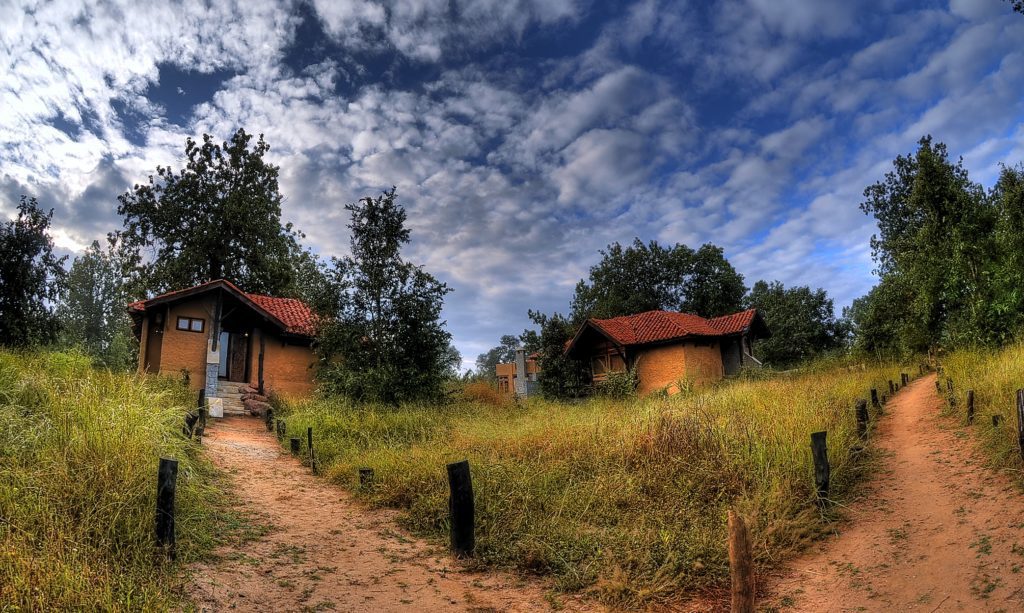
Best Time to visit Kanha National park:
October to June
Indian Wildlife Safari Tour Duration:
Tailor made as per need Kanha wildlife safari is suggested for a duration of minimum 6-7 nights intermixed with other neighbouring parks as well. .
Highlights of Kanha:
Tiger Safari, Sal Forest and Meadows, Bajar river, Barasinghas, and over 350 species of birds and plenty of things to do in the quaint Kanha national park.
Best way to reach Kanha National Park:
Fly to Jabalpur and drive 3 hours. Jabalpur is also well connected to all the major cities in the country and hence can be conveniently reached through road or rail.
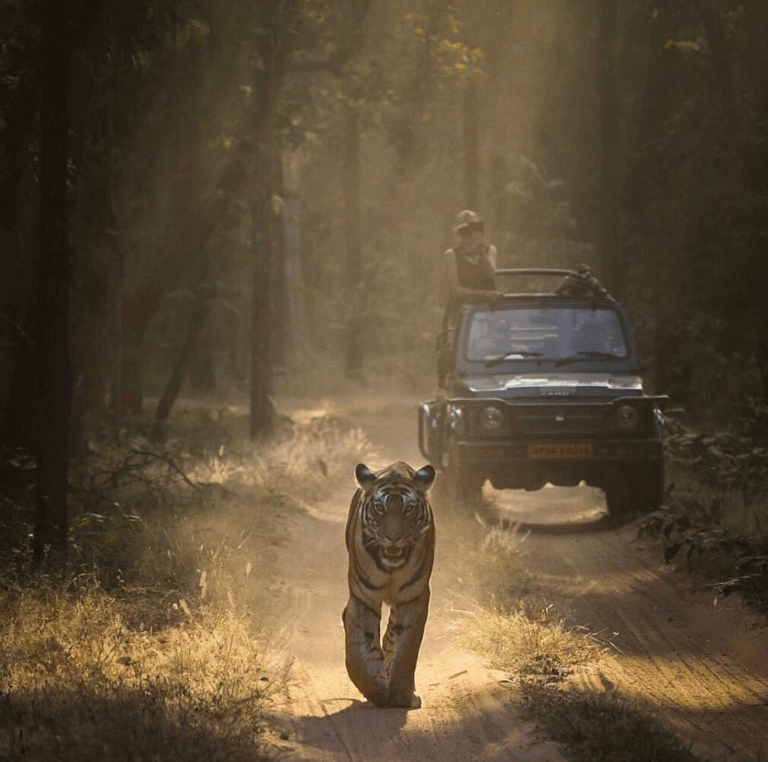
4. Bandhavgarh National Park, Madhya Pradesh
Bandhavgarh is surrounded by the Vindhya hills in the Umaria district of Madhya Pradesh, in Central India. Spread over thirty-two hills and expansive grasslands with flourishing vegetation, this tiger country of India is steeped in history and a diverse population of flora and fauna.
This abundant forest with one of the highest densities of tigers in the world, was a Shikargah, or game reserve for the Maharajas of Rewa, until it was declared a tiger reserve in 1972, under Project Tiger and Wildlife Protection act. It is also home to Mohan, the first white tiger bred under captivity, by the Maharaja of Rewa.
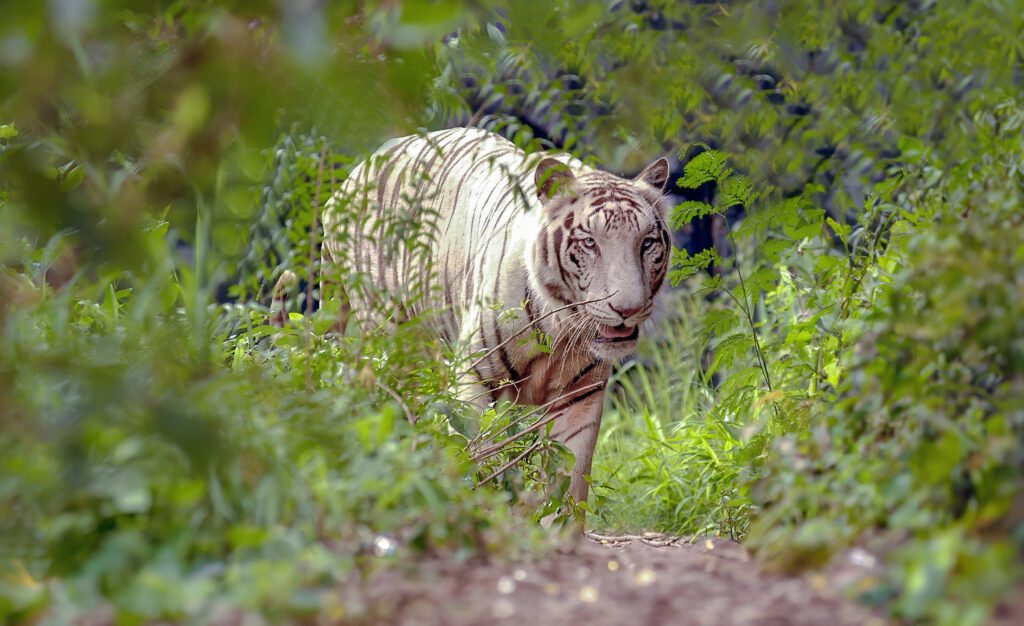
Endowed with twelve natural waterholes, several historical monuments, and remains of ancient caves that are witnesses to the two-thousand years of history; Bandhavgarh makes for one of the most enticing wildlife destinations. The expansive grasslands are flanked by Saal forests and mixed deciduous forests that support Dhobim, Saja and Salai, and dense Bamboo thickets.
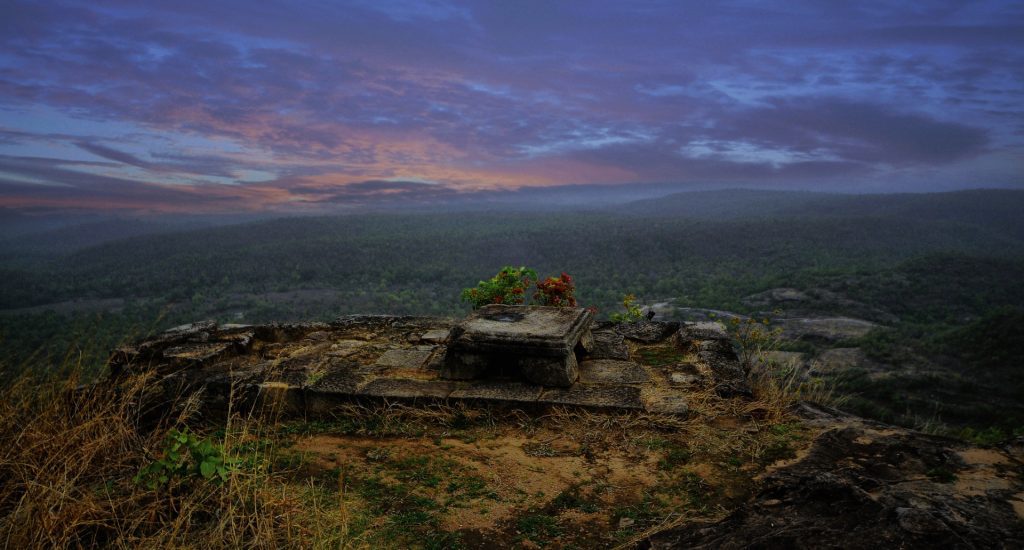
With the tiger at the apex of the food chain, Bandhavgarh supports 37 species of mammals, more than 250 species of birds, about 70 species of butterflies, and a large number of reptiles and amphibians. Mammals also include Jackal, Sloth bear, Striped hyena, Leopard, Jungle cat, Civets, Palm squirrel, Nilgai, Sambhar, Spotted Deer, resident population of Elephants in the recent years; and many more.
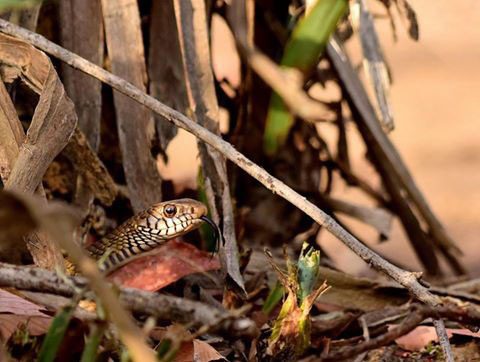
The reptile population is also varied with Cobra, Viper, Python, Turtle, Monitor lizard etc.
Home to a number of migratory, as well as resident species of birds like Sarus Crane, Indian Pond Heron, Lesser Adjutant Stork, Indian Roller, Racket Tailed Drongo, Asian Paradise Fly Catcher, Great Cormorant, Jungle Fowl, Crested Serpent Eagle, Bandhavgarh is also a birders paradise.
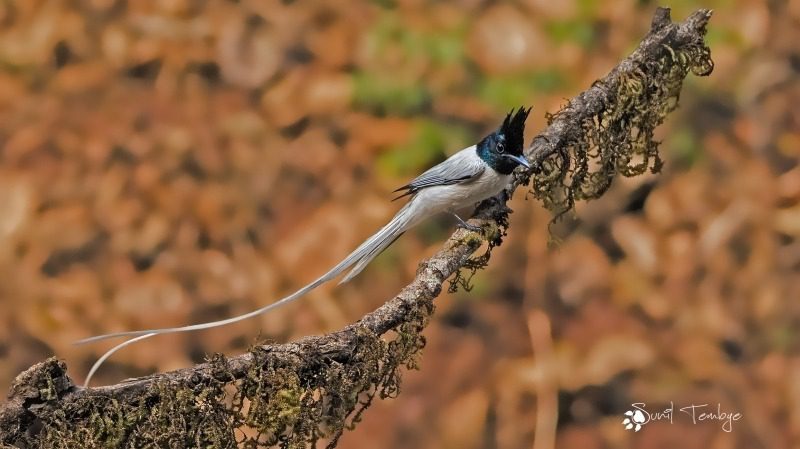
Best Time to visit Bandhavgarh National Park:
October to June
Indian Wildlife Safari Tour Duration:
Tailor made as per need; suggested duration is minimum 6-7 nights for wildlife safaris in Bandhavgarh that can be interspersed with other parks as well.
Highlights of Bandhavgarh:
Tiger Safari, Bandhavgarh Fort, Ancient man-made Caves and Shesh Shaiya and plenty of other things to do in Bandhavgarh.
Best way to reach Bandhavgarh National Park:
Fly to Jabalpur and drive for 3 ½ hours to reach the National Park. Jabalpur is well connected from all major towns in India, hence making it an ideal town to reach Bandhavgarh National Park.
5. Satpura National Park, Madhya Pradesh
Satpura National Park is Madhya Pradesh’s serene sanctuary nestled in the Mahadeo hills. The meandering Denwa river takes one to the Madhai zone that warmly greets every visitor with tranquil wilderness views.
The rugged terrain of Satpura National park has deep, yawning valleys and gorges, stunning sandstone peaks, gurgling rivulets and brooks, cascading waterfalls, dense forests of Sal and Teak, and an abundance of medicinal plants.
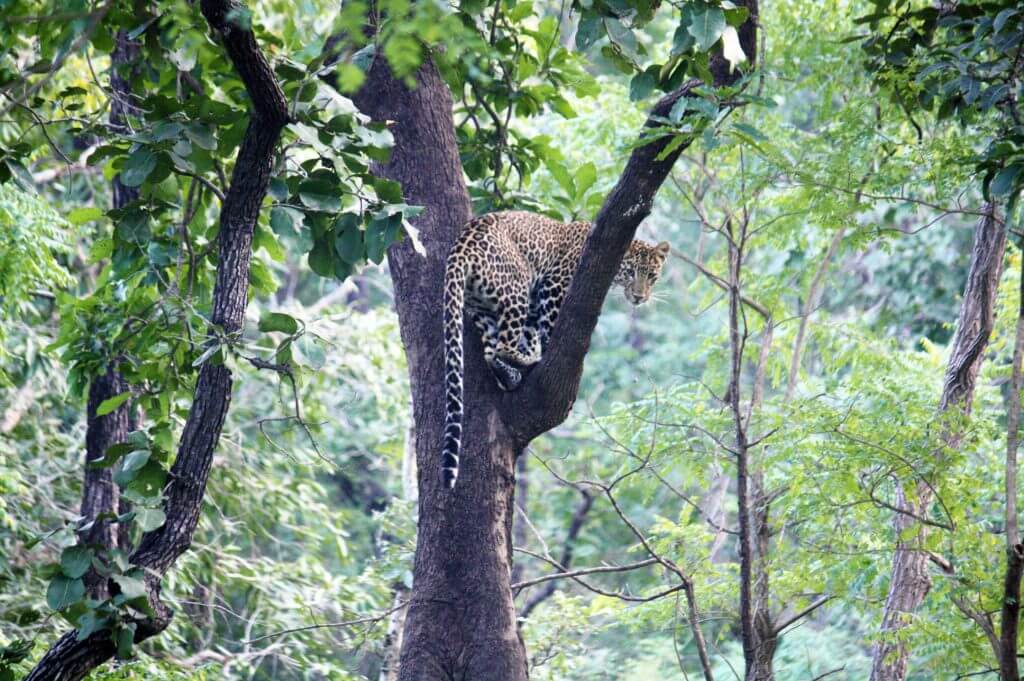
Satpura has a rich tapestry of flora and fauna. Some of the residents of this quaint national park include Spotted Deer, Indian Bison (Gaur), Tigers, Leopards, Wild boar, Wild dog (Dholes), Blackbuck, Porcupine, Sambhar, Four Horned antelopes (Chowsingha), Crocodile, Honey Badgers, Otters, Langurs, and the famous Albino Gaurs.
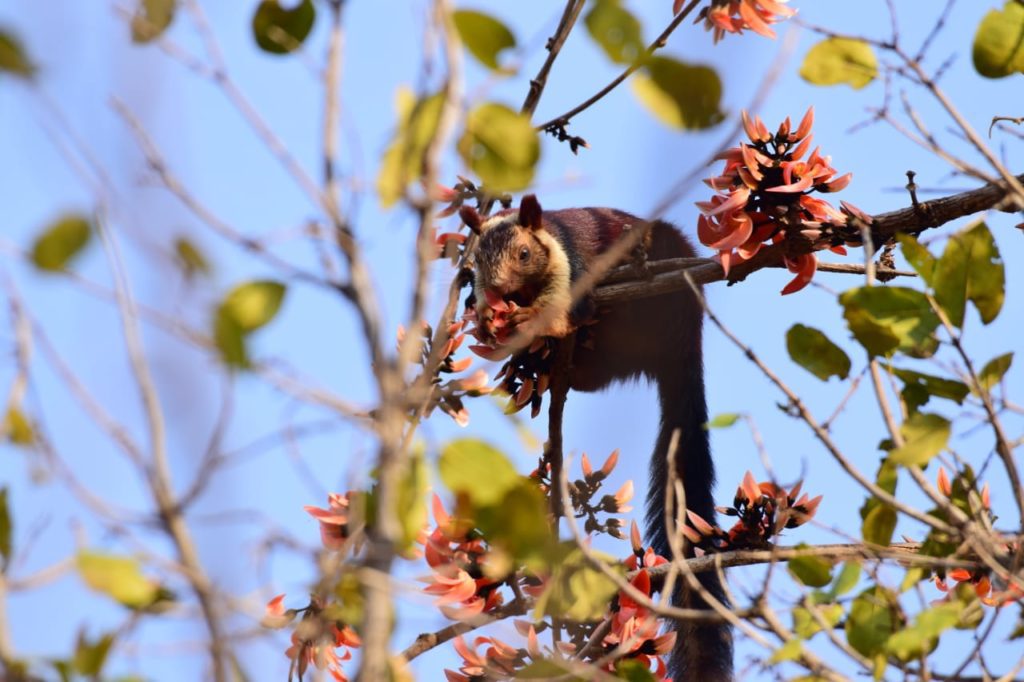
Sloth bear and Leopard sightings are the special attractions of Satpura. As are the Malabar Squirrels or the Indian Giant Squirrel and Blackbucks.
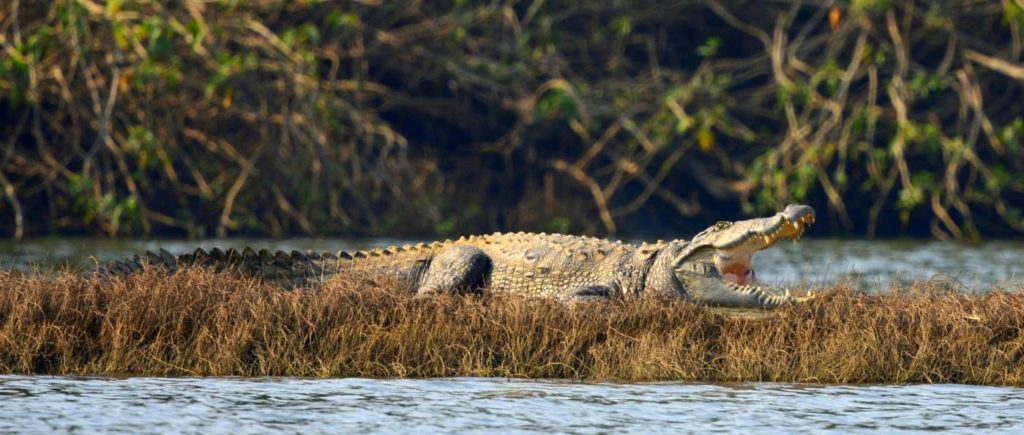
About 31 species of reptiles including a variety of snakes, Indian Chameleons, and Turtles like Soft-shelled Turtles, Monitor Lizards, Marsh Crocodiles; inhabit in these pristine forests.
The numerous water bodies attract a host of local and migratory birds, making Satpura a much preferred destination for bird lovers. Over 300 species or birds are found here. One can spot raptors like the Honey Buzzard, Black Eagle, Rufous-bellied Eagle, and others. Birds like Malabar Pied Hornbill, Paradise Fly Catcher, Migrant Waterfowl, Bar-headed Goose, Pintail, Garganey, Pochard, River Terns and Ruddy Shelduck, including rare species like the Indian Skimmer that visit this serene island, occasionally.
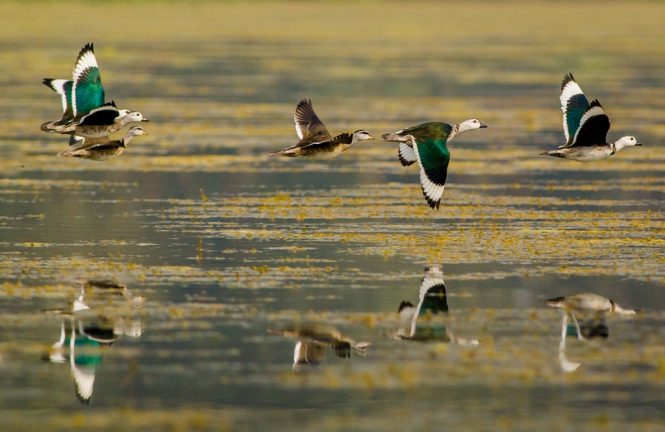
Best Time to visit Satpura National Park:
October to June
Indian Wildlife Safari Tour Duration:
Tailor made as per need; suggested duration is minimum 5-6 nights for wildlife safaris in Satpura.
Highlights of Satpura:
Tiger Safari, Forsyth trail , Churna Full Day Safari, Walking Safaris, Night Patrol, Glamping; are among other activities in Satpura.
Best way to reach Satpura National Park:
Fly to Bhopal, and drive 2-1/2 to 3 hours to reach the National Park. Itarsi is a prominent railway junction with trains from all across the country and is just 70 km away from Satpura.
6. Jim Corbett National Park, Uttarakhand
Corbett National Park located in the foothills of Himalayas in the Nainital district, of Uttarakhand has a glorious history of being the oldest national park established in the year 1936, as Hailey National Park. It came under the aegis of Project Tiger that was spearheaded in this park in 1973, declaring it a tiger reserve.
It was re-named Corbett National park to honour the Edward James Corbett or Jim Corbett, a tracker, naturalist, conservationist, author, and hunter of several man eating tigers and leopards.
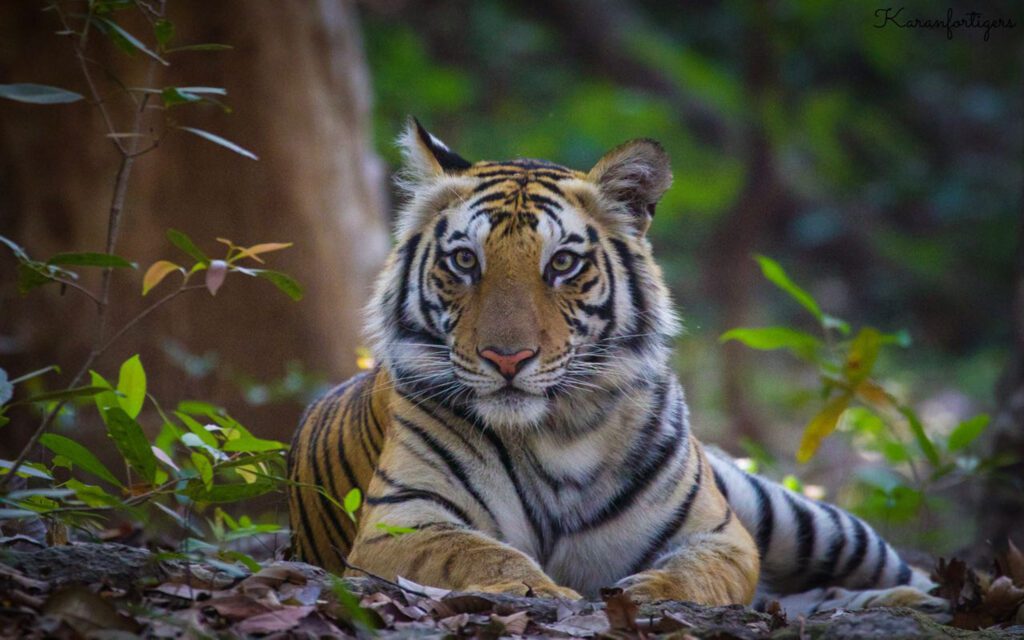
The charming, varied landscape of Corbett has lush grasslands, sloping hills and hillocks and serpentine rivulets from the Ramganga river that meander around the landscape, making it an ideal home for different wildlife species.
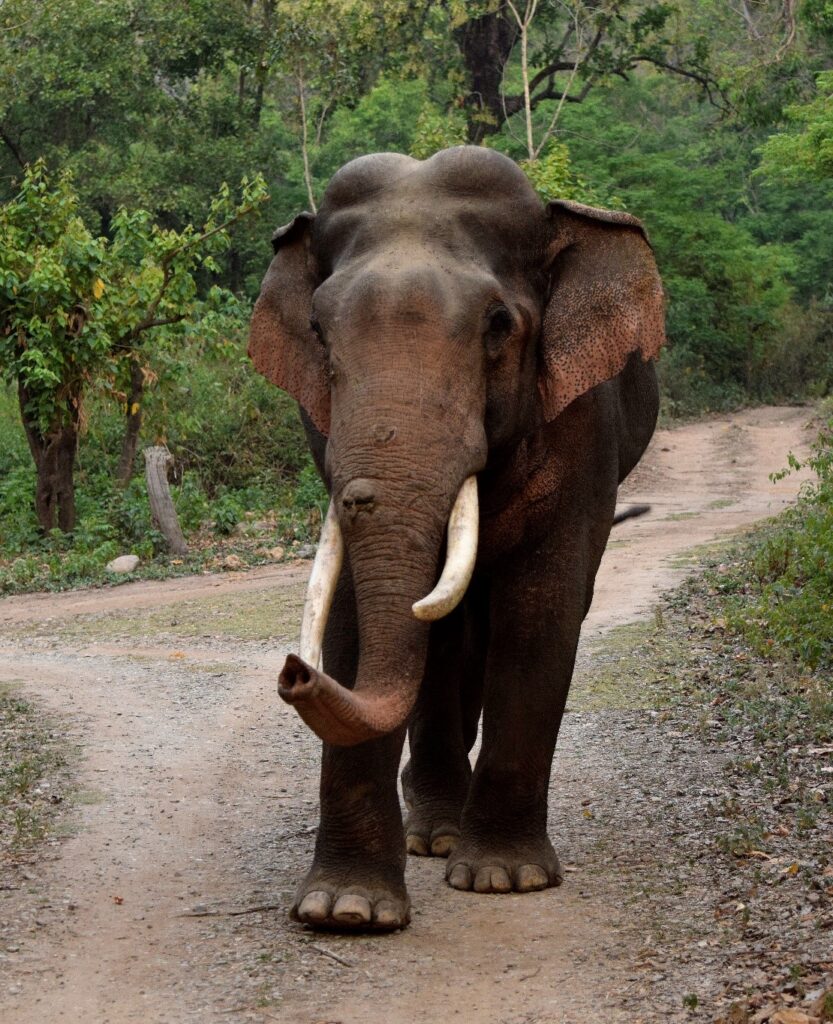
Corbett lies straggled over 1318.54 sq. km, of which 520 sq. kms forms the core zone, and the rest is buffer; extending into the picturesque landscapes of Pauri Garhwal, Almora, and Nainital.
Over 110 tree species, 55 mammals species, 600 bird species, and 25 reptiles, Corbett is every wildlife enthusiast’s go-to paradise.
The Royal Bengal tiger is the most sought after mammal of this park, but others like leopards, elephants, sambar deer, spotted deer, barking deer, jungle cats, wild boars, and sloth bears are also the key mammal residents along with the lesser spoken yellow-throated martens and the Indian pangolin, porcupines etc.
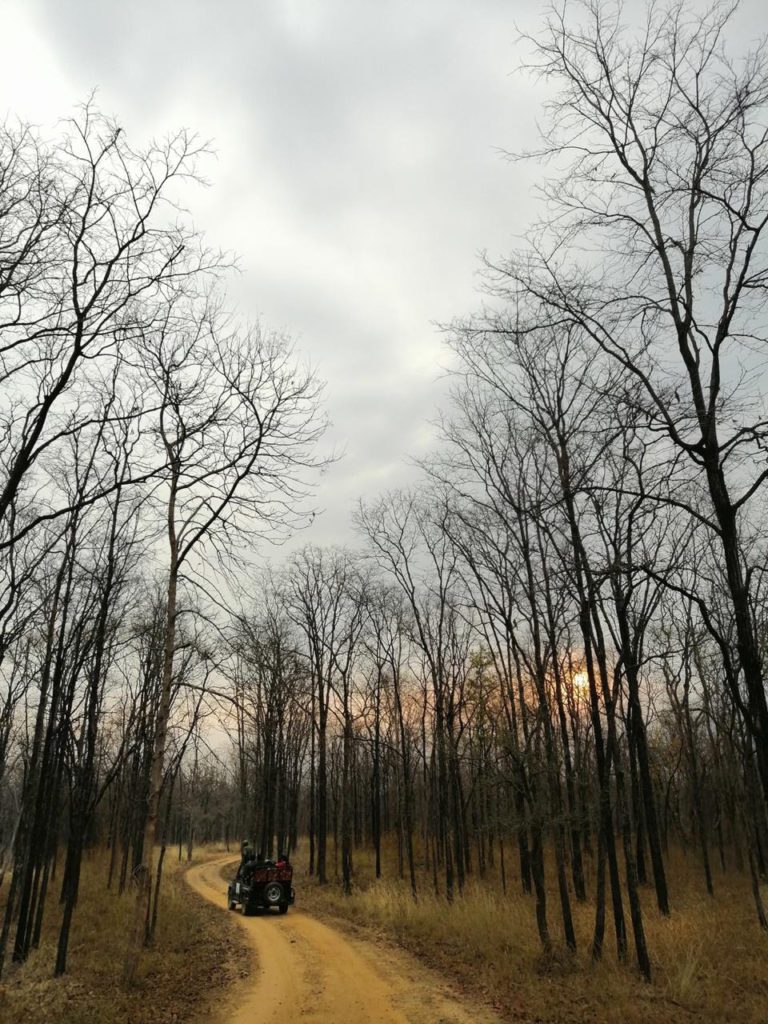
The thick forest cover made of Saal trees, makes it hard to spot wildlife easily, but patience pays eventually.
An avian lovers paradise you can spot some of these birds among many others at Corbett: Great Hornbill, Collared Falconet, Fish Eagles, Blue Throated Barbet, Chestnut-Headed Bee Eater, Great Barbet, Himalayan Ruby-Throat, Black-Headed Jays, Laughing Thrushes, Woolly-Necked storks, Crested Serpent Eagles, Shikras, Himalayan vultures, Grey herons, Ruddy-shelled Duck, River Lapwings, different species of owls like spotted owlets, fish owls, and the scops owls etc. Unique species like Great Slaty woodpecker, Ultramarine flycatcher, ibisbill, Wall creeper, Hodgson’s Bushchat, Bright-headed Cisticola and Rosy Minivet, and others can be spotted too.

Best Time to visit Corbett National Park
October to May
Indian Wildlife Safari Tour Duration:
Tailor made as per need; suggested duration is minimum 5-6 nights.
Highlights of Corbett:
Tiger Safari, Patrol, Glamping, Camping, Visiting Garjia temple, Fishing, Rappelling, Rock Climbing, Visit Corbett Museum. Kalagarh tiger reserve offers an ideal safari experience for serious wildlife safari lovers, and is less touristy as well.
Best way to reach Corbett National Park:
Corbett National Park can be reached by road from Delhi and takes around 6 hours. The nearest railway station to Corbett is Ramnagar which is around 12 km away from Corbett. The park is connected by regular trains to all parts of India via New Delhi. You can also take a flight to Pantnagar, and then drive to Corbett which is roughly 2 hours by road.
7. Kaziranga National Park, Assam
The dense forests of Kaziranga national park are home to the Indian One-horned Rhinoceros. Dotted with towering elephant grasslands and meadows, swampy marshes and lagoons; Kaziranga is a biodiversity haven. Over 60% of the world’s population of the Indian One-horned Rhinoceros inhabit this UNESCO world heritage site.
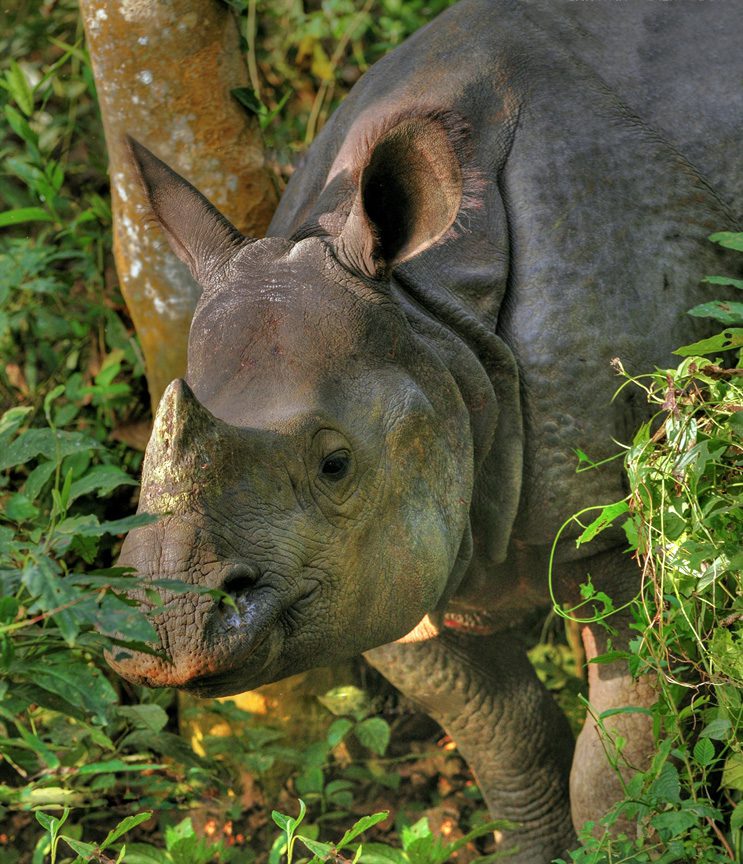
Kaziranga reserve forest was set up in 1905, under the recommendations of Mary Curzon, wife to Lord Curzon, the then Viceroy of India. Declared a Tiger reserve in 2006 as the tiger population in the park grew, Kaziranga is home to a variety of avian, mammal, reptile and amphibian population
The mighty Brahmaputra river also flows in this diverse and thriving landscape of Kaziranga National park. The park is spread across an area of 1173.58 sq. kms. that includes 625.58 sq. kms of core tiger territory and 548 sq. kms of buffer zone.
The varying landscape and altitudes along with the flourishing channels and tributaries of the Bhramaputra supports a motley of vegetation like grasslands, tropical semi-green forests, savannah woodlands and mixed deciduous forests. The state tree of Assam is Dipterocarp known as Hollong, in the wet evergreen forests.
The Savannah woodlands support trees like Silk Cotton, Amla or Indian Gooseberry, Elephant Apple, Wild Gauva, Kumbhi etc. A flourishing aquatic flora can be seen in the lakes, ponds, river banks and wetlands of Kaziranga. The grasslands support a variety of tall grass species as well.
Join a Wildlife Tour in India and discover the mesmerizing world of India’s wildlife, where every safari is a unique adventure.
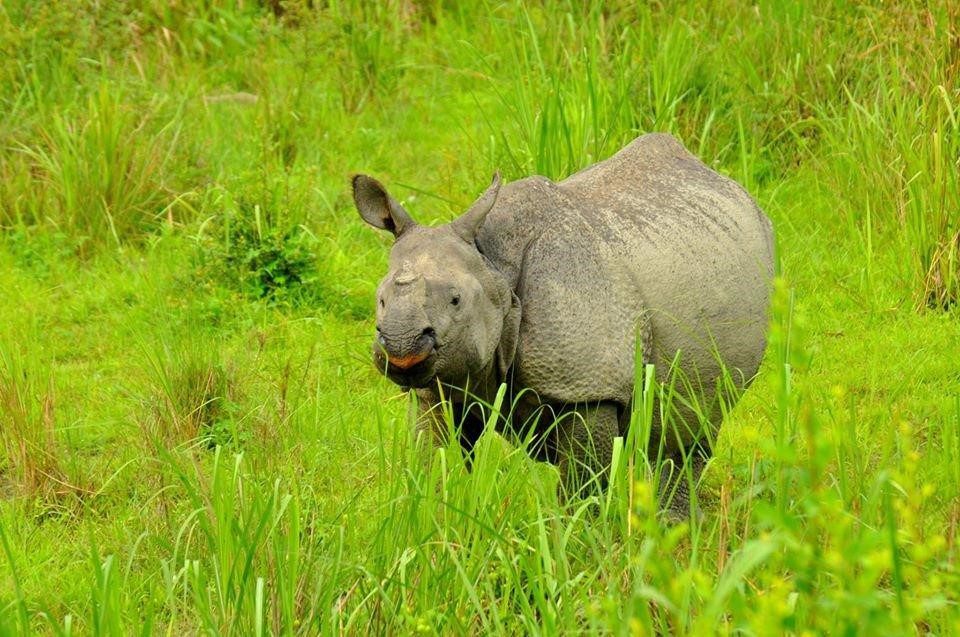
The fauna include the largest population of the Indian One-horned Rhinoceros including 35 mammals species like tigers, leopards, sloth bears, elephants, wild boars hog deer, swamp deer, hog deer wild buffalos.
The primate population in the evergreen forest patches include Western Hoolock Gibbons the only ape population of India. Primates like Bengal Slow Lories, Capped Langur, Assamese Macaques, Rhesus Macaques are spotted in this enchanting landscape.
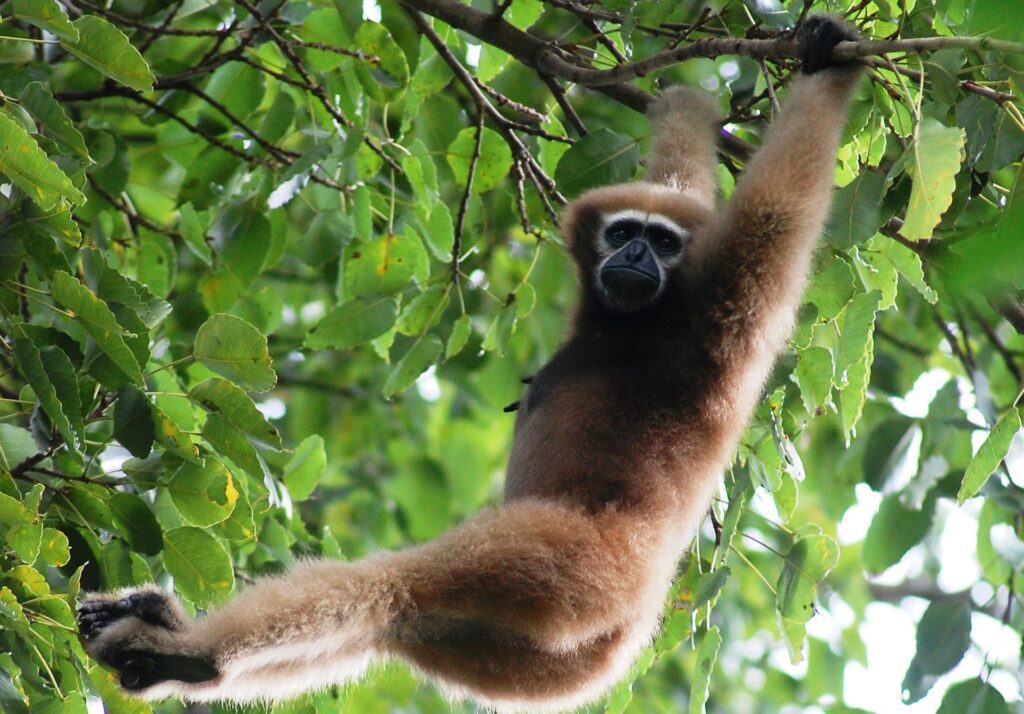
The reptilian population includes a variety of snakes including the King Cobra, Cat snake, pythons, a variety of turtles including the endangered Assam Roof Turtle, Peacock Soft shelled turtle, Spotted turtle, Bengal Monitor Lizards etc.
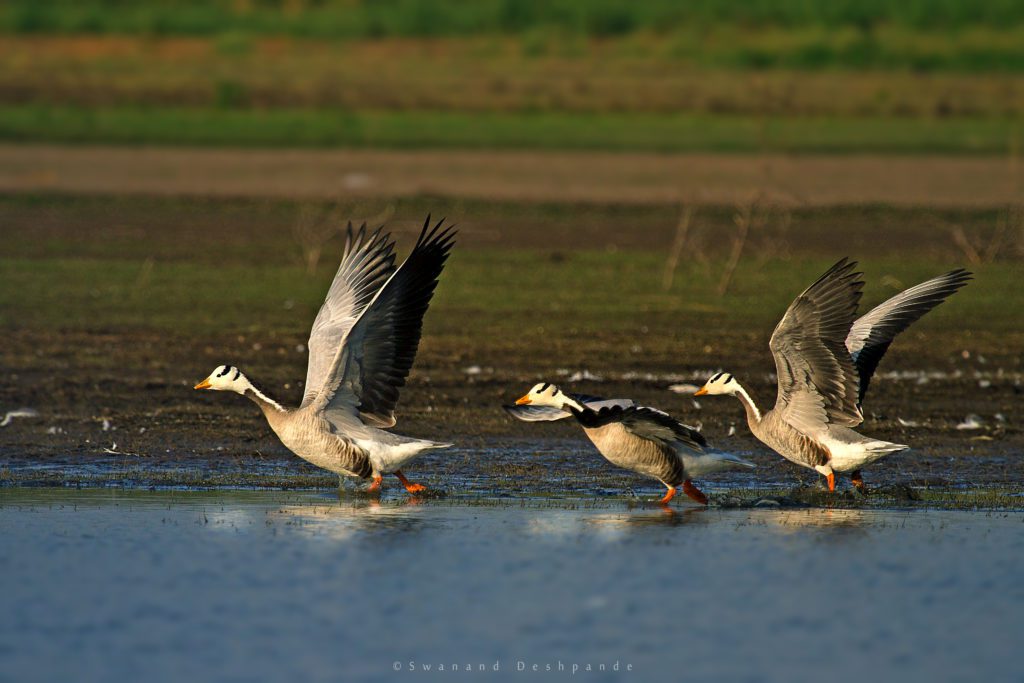
A bird-lovers paradise Kaziranga homes over 500 species of birds of which 200 are resident birds and the rest migratory. Among these are 27 threatened species of avian population too. Some of the species include Bengal Florican, Greater Hornbill, Grey Headed Fish Eagle, Spot Billed Pelicans, Swamp Francolins, Finn’s Weaver, Grey Breasted Parrotbills and winter migrants like Slaty Blue-Flycatchers, Himalayan Ruby Throats, Grey Backed Shrikes, Chestnut-Crowned Bush Warbler. Not to forget, the Bar-headed geese that arrive in huge gaggles of upto 3,000.
Best Time to visit Kaziranga National Park
November to ̄April. The park also remains shut from 1 May to 31 October.
Indian Wildlife Safari Tour Duration:
Tailor made as per need; suggested duration is minimum 5-6 nights.
Highlights of Kaziranga:
Tiger and Rhino Safaris by jeep, Boat safaris for Gangetic River Dolphins in the Brahmaputra River and other aquatic and avian life, visit to the picturesque tea gardens and experiencing the immersive processes of tea plantation to tea-making, visit to Gibbon Wildlife sanctuary, Manas National Park and others in the periphery, visit to Kaziranga Orchid and biodiversity park that also showcases the rich heritage of Assam
Best way to reach Kaziranga National Park:
Fly to Guwahati or Jorhat, and then drive 4-5 hours from Guwahati and 2-1/2 to 3 hours to reach the National Park. By train one can reach Guwahati or Jorhat and then drive down to Kohora, the main tourist hub for Kaziranga.
Rules and Regulations : Park Etiquettes
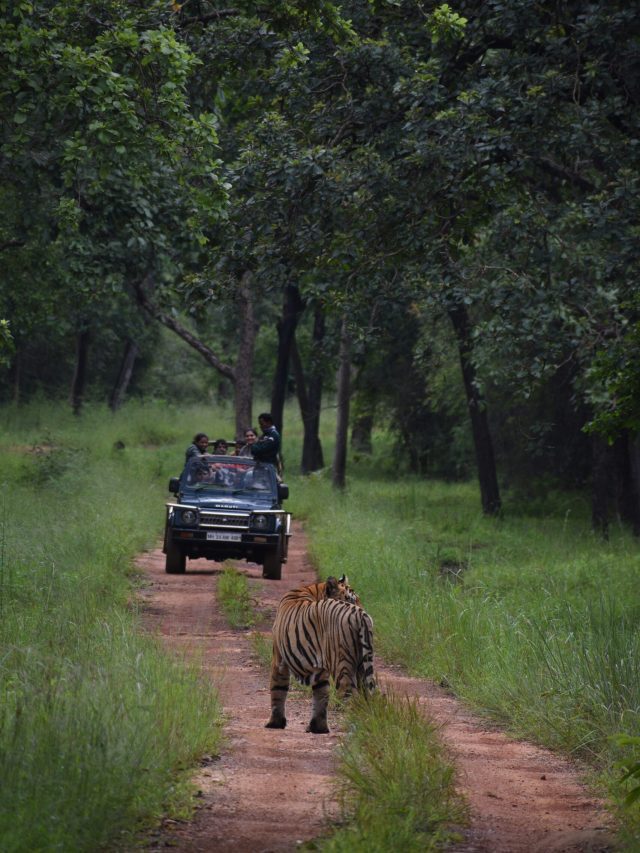
To ensure the safety of visitors and minimise human impact while ensuring the forests and wildlife are conserved; certain rules and regulations must be maintained at all times by the visitors. These include:
- Following all the park rules.
- Maintaining safe distance from the wildlife.
- Not alighting from the jeeps.
- Not provoking or teasing the animals, while maintaining and honouring their silence. As visitors we in their territory and its important to respect them and their home.
- Not littering, or feeding the animals.
Difference between Indian and African Safari
Both the Indian and African safaris are exhilarating adventures that promise to offer a plethora of unique experiences.
1.Landscapes: Africa is the land of Savannah grasslands, whereas India offers a wide array of diverse landscapes that include mixed deciduous forests, undulating hillocks, tropical forests, rain forests, woodlands and expansive grasslands and beyond.
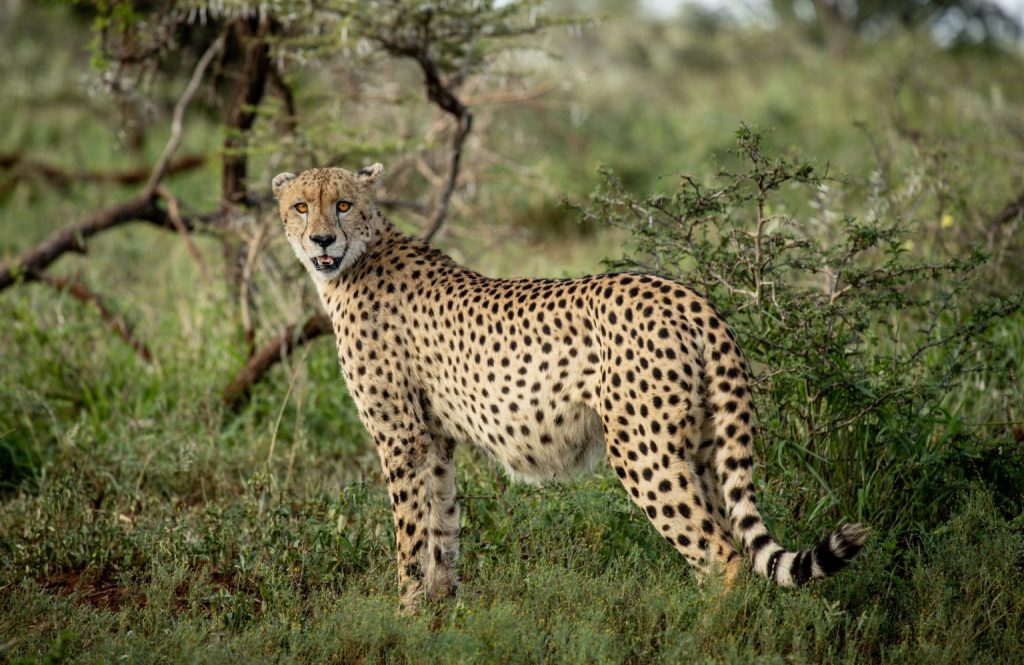
2. Highlights: Africa is popular for its Great migration where millions of mammals like Wildebeest, Zebras, Antelope species migrate between Tanzania and Kenya. Africa is home to a large population of mammals as well including cheetahs, leopards, giraffes, elephants etc.
India on the other hand is home to the largest population of Tigers in the wild, which are it’s biggest highlight for a Tiger Safari. India also has a varied population of mammals along with a diverse number of reptiles, amphibians, butterflies and insects, and avian population.
3. Safari Vehicles: Africa uses land cruisers, vans and other 4WD vehicles, whereas Indian safaris include open jeep safaris in 4×4 jeeps and open canters as well.
4. Best Season : The best months for migration are June to October in Africa, but the wildlife sightings continue to be good throughout the year. The parks are usually open, except one or two that are shut from March to April. The sightings are usually good because of the landscape which is open, grasslands and desert areas with scrub vegetation.
In India the best time for sightings is November to June. Every season, whether winter, spring or summer have their own charm and exclusive experiences to offer. Summers are perfect time for tiger sightings, and other wildlife too; as they can be seen by the water bodies and watering holes. The sightings are excellent and diverse, yet the dense forests of India can at times prove to be elusive for sightings.
5. Accommodation: Africa offers tented camps within the forests, to luxury, 5-star boutiques as accommodation. India also offers a range of places to stay that include 5-star luxury lodges within the forest circuits, to mid-range accommodations and simple lodgings with basic amenities.
India offers a wonderful tiger terrain and exploratory wilderness experiences that are beyond mesmerising. The flourishing, eclectic landscapes offer adrenaline pumping, wildlife safari experiences which are beyond memorable.
Written by: Natasha Sinha

